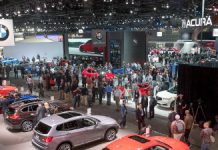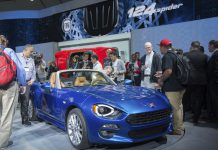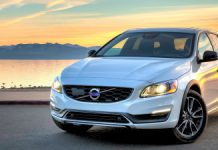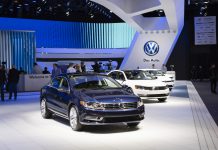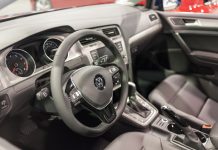
At NerdWallet, we stick to strict standards of editorial integrity that will help you decide with full confidence. Many or all of the products featured listed here are from your partners. Here’s how we make money.
There’s a brand new contestant?in the electric car arena, one on which some major players, including Toyota and Honda, are betting big. It is the fuel cell electric vehicle, or FCEV.
FCEVs use hydrogen, oxygen along with a catalyst to create electricity on board, eliminating the heavy, bulky and expensive energy which battery-electric cars rely.
A fuel cell car’s tank can be full of compressed hydrogen gas in a matter of minutes, much like gassing up a regular car. That’s much speedier than the hours a battery-electric may spend tethered to an electric charging cord, with FCEVs having the ability to travel 250 or even more miles between fill-ups, they might sidestep?the range anxiety that has dampened consumer enthusiasm for electric.
But to date there are just two models in the retail market, having a third slated for launch close to the end of 2016. And sales are restricted to the greater Los Angeles and San Francisco/Silicon Valley regions of California, home to almost all of the nation’s scant number of hydrogen filling stations.
Fuel cell cars aren’t cheap. Prototype models were reported?to cost the manufacturers a cool $1 million. Costs have fallen significantly since then, but for now FCEVs?are restricted to upper-income shoppers.
Still, nearly every major automaker is developing fuel cell technology, with nearly a dozen models likely to be launched globally by 2020.
There may be one out of your future, why don’t we check out what’s out there and at the pluses and minuses of the fuel cell car.
The vehicles
The lease-only Hyundai Tucson FCEV was initially to promote, with?125 on the highway in the U.S. because the mid-2014 launch. The compact SUV leases for $499 per month for 3 years, which?includes free fuel, free maintenance and insurance. Hyundai Tucson FCEV customers could also qualify for $5,000 in the California Clean Vehicle Rebate Project.
Toyota’s Mirai FCEV small sedan was launched earlier this year. Toyota leases the Mirai for $499 per month for three years, with free fuel and maintenance.
While 80% of the 270 Mirais delivered to dealerships so far happen to be leased, you can also buy one. Toyota prices it at $57,500 before $20,500 in potential incentives.
Toyota officials have asserted because fuel cell systems tend to be more easily scalable than battery-electric systems, they be prepared to make use of the technology in other models in the future, including larger vehicles than can currently be designed with battery-electric technology.
Up next
The next fuel cell electric car hitting the marketplace will be Honda’s Clarity Fuel Cell, a midsize sedan slated for late 2016. The company has stated it will target a?monthly lease price of just below $500, based on a projected sticker price of about $60,000 before incentives. Honda hasn’t said whether or not this will sell the cars too (battery-electric and plug-in hybrid versions from the Clarity are coming later).
Ford, Nissan and Daimler – which makes Mercedes-Benz cars – are co-developing fuel cell vehicle technology. BMW is working with Toyota by itself FCEV, and General Motors has teamed with Honda. Volkswagen, Audi and a quantity of Chinese automakers also are thought to be developing fuel cell electric cars. Vehicles from those automakers are expected by 2020.
Fueling stations
As of mid-2016 there were only 23 freely available hydrogen fueling stations within the U.S., 20 of them in California. That’s why Hyundai, Toyota and Honda limit sales to that state right now. Twelve hydrogen stations are slated for the Northeast, from Boston to New York, with the first four scheduled to open in 2017.
California’s “hydrogen highway” plan calls for at least 60 hydrogen stations to be opened in the state by 2020, with 50 of them scheduled by the end of 2017. ?A recently opened hydrogen station midway between Los Angeles and Bay area now permits fuel cell vehicles to travel between the two areas.
Technology
Fuel cell vehicles may seem futuristic, however their underlying technology is more than 175 years old. NASA has been using fuel cells to create electricity on spacecraft for nearly fifty years now, and also the first modern fuel cell vehicle – a farm tractor – has been around since 1959.
The fuel cell?that they obtain name is a thermochemical generator that passes pressurized hydrogen via a catalyst for example platinum and extracts the hydrogen’s electrons to supply power for the car’s motor unit. The system then combines the hydrogen molecules with oxygen from the air to cool them down and expels the “exhaust” like a stream water vapor.
Hydrogen
The hydrogen which makes this possible isn’t technically?the fuel. It merely carries the electrons that are the raw material for that electricity that powers the automobile. For automotive use, it is compressed to 10,000 pounds per sq . inch and measured by weight. A kilogram (2.2 pounds) of the compressed hydrogen carries approximately the same amount of energy as a gallon of gasoline.
Because fuel cell power systems are comparatively energy-efficient, a Toyota Mirai can travel more than 300 miles between refills of their 5 kg fuel system. The heavier Hyundai Tucson delivers 265 miles on 5.5 kg of hydrogen, and also the selection of the upcoming Honda Clarity continues to be given as “more than 300 miles” having a fuel tank comparable size because the Toyota’s.
Because the use of hydrogen being an automotive fuel is really new, it’s hard to check it with?the price of gasoline. Toyota figures its present cost at $14 per kilogram. The Mirai can travel more than 300 miles on its 5 kg. Greater utilization of hydrogen in cars would lower the price, just like any fuel.
While hydrogen is extremely flammable, tests by various hydrogen tank manufacturers and by researchers at the University of Miami (Florida) have shown that in accidents that breach the hydrogen tanks, the gas escapes upward, meaning that any flames would be directed up and away from the vehicle. Gasoline fumes, on the other hand, are heavier than air and will pool around the car in concentrations that can be explosive. Since hydrogen is 14 times lighter than air, it disperses quickly unless it is inside a confined area, such as a garage.
Environmental impacts
Some fuel cell car detractors claim that while the?vehicles?have no tailpipe emissions, there isn’t any environmental help to FCEVs due to the greenhouse gases created by hydrogen production, which is tremendously energy-intensive.
However, most government research has shown that, on the global basis, fuel cell electric vehicles are more efficient and less environmentally harmful than gasoline and diesel vehicles inside a full “well-to-wheels” comparison of the impact of fuel production and employ.
Unless their hydrogen is produced using renewable energy sources, fuel cell cars are less energy-efficient than battery-electric vehicles. Proponents argue, however, their greater range makes them more consumer-friendly.
Toyota Mirai at hydrogen fueling station: photo via Toyota.
John O’Dell is really a longtime automotive writer who has covered alternative-fuel cars for the La Times and Edmunds.com. Lucrative runs the website?The Green Car Guy.? Email:[email protected].


